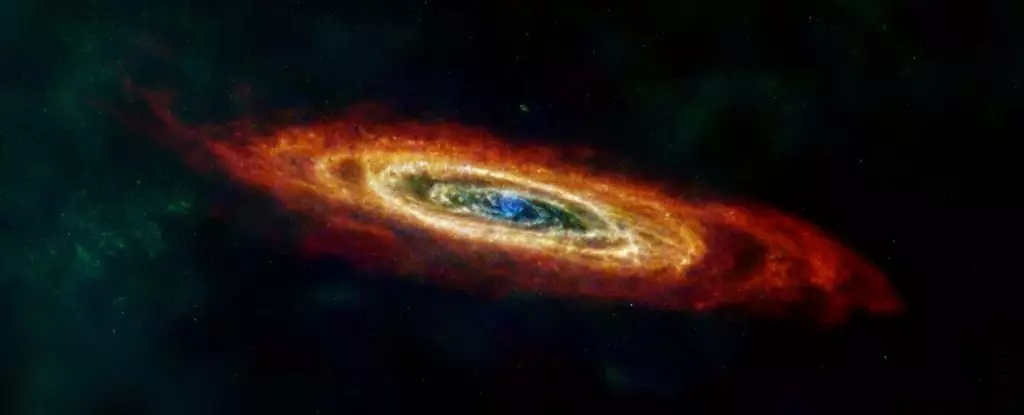Stars have always fascinated humanity, from ancient stargazers to modern astrophysicists. The life cycle of a star is a remarkable yet violent journey, governed by the balances of gravitational forces and nuclear fusion. Massive stars, particularly those that are at least eight times the mass of the Sun, ultimately end their lives in spectacular explosions known as supernovae. These cataclysmic events not only signify the end of a star’s life but also lead to the creation of neutron stars or, in more extreme cases, black holes. Yet, recent discoveries are challenging our understanding of this cosmic phenomenon, as evidence emerges that some massive stars may transition directly into black holes without the explosive finale we expect.
The life cycle of a star hinges upon a precarious balance—when nuclear fusion produces enough energy to counteract the gravitational forces trying to pull the star inward. Massive stars spend their lives fusing hydrogen into helium, but eventually, they exhaust their nuclear fuel. At this critical juncture, the balance tips, and gravity takes over, causing the star to collapse under its own weight. This collapse can trigger a supernova: a magnificent and violent explosion that can momentarily outshine entire galaxies.
However, what if this dramatic display doesn’t take place? New research suggests that the collapse of a massive star does not always result in a powerful supernova. Instead, in certain cases, these stars can bypass this explosive phase and directly form black holes. This paradigm shift in our understanding of stellar evolution poses significant questions about the nature of supernovae and black holes themselves.
One particularly intriguing case is that of a massive, hydrogen-starved star in the Andromeda Galaxy, designated M31-2014-DS1. According to research led by Kishalay De at MIT, this star exhibited unusual behavior that defies the typical patterns of stellar death. Observations showed a brightening phase in 2014, which maintained a constant luminosity for over a thousand days. Subsequently, it underwent a dramatic fading that persisted for another thousand days, leaving astronomers perplexed.
In 2023, the star was notably absent from further observations. The significant findings indicate that M31-2014-DS1 was born with a mass roughly 20 times that of the Sun but shed considerable material over its lifetime, left with only about 6.7 solar masses by the time of its disappearance. The researchers noted evidence of a dust shell surrounding the star, suggesting that some form of a catastrophic event had occurred, yet there was no optical outburst—a key characteristic of traditional supernova explosions.
What could inhibit a massive star from detonating? The answer lies in the complex interplay of physical forces within the dying star. When a stellar core collapses, it reaches such extreme densities that electrons merge with protons, creating neutrons and a vast number of neutrinos in a process known as neutronization. These neutrinos are neutral particles, rarely interacting with normal matter, yet they carry away a significant portion of the star’s energy.
In a typical supernova, these neutrinos would generate a shockwave that ultimately drives the explosion, allowing the star to shed its outer layers. However, this process can stall; if the neutrino shock fails to reignite, the collapsing star cannot produce enough energy to trigger an explosive release. The case of M31-2014-DS1 illustrates this phenomenon—evidence suggests that the neutrino shock did stall. Consequently, about 98% of the star’s mass collapsed into the core, giving birth to a black hole rather than a supernova.
The existence of stars that fail to produce supernovae has profound implications for our understanding of stellar evolution. M31-2014-DS1 is not alone in this space; astronomers have identified other potential failed supernova candidates, though they remain elusive due to their subtle nature. These discoveries challenge long-held beliefs in astrophysics and highlight the complexities inherent in studying massive stars.
Previously, astrophysicists estimated that approximately 20% to 30% of massive stars might end their lives without a spectacular outburst. With ongoing observations and research, the community is delving deeper into this enigmatic behavior, ultimately seeking to refine existing models of stellar death and black hole formation.
As we continue to probe the cosmos, unraveling the mysteries behind massive stars and their evolution remains a tantalizing challenge. The case of M31-2014-DS1 exemplifies how much we still have to learn about the universe’s mechanics. The transition of a star directly into a black hole evokes questions about not only the fate of individual stars but also the broader structure and evolution of galaxies themselves. Carrying forward these findings may reshape our cosmic narrative, leading to new paradigms in stellar study and a better understanding of the universe’s darkest structures.

